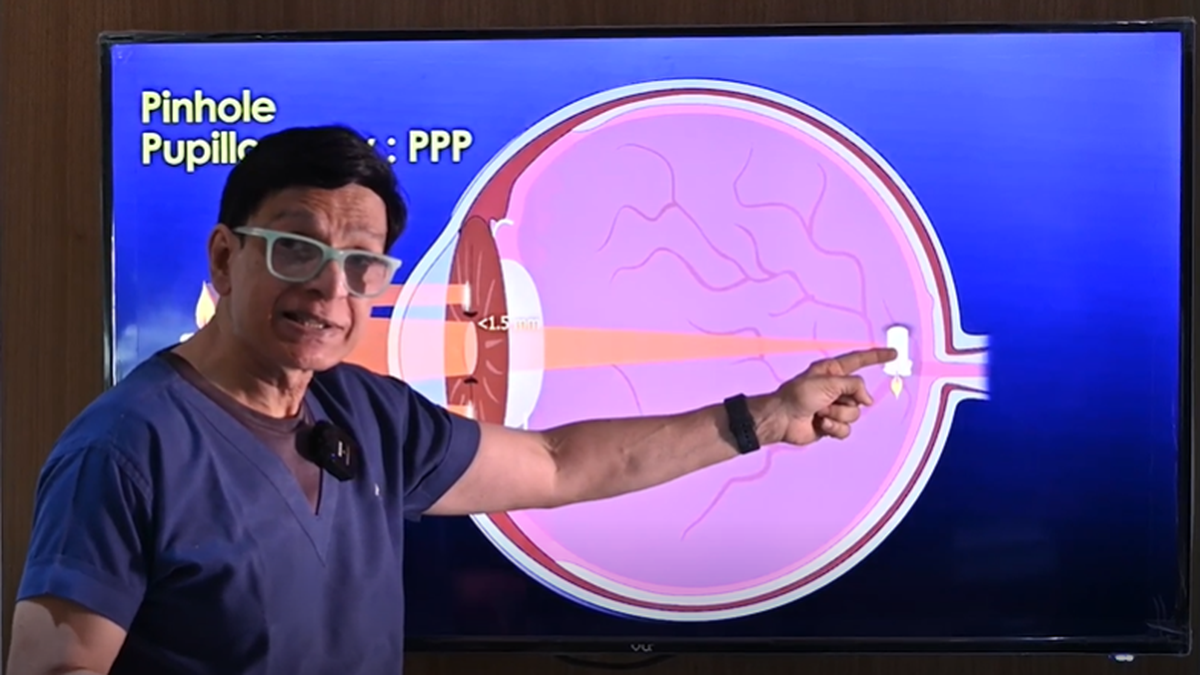Science
Pinhole Pupilloplasty Offers New Hope in Vision Restoration

A new surgical technique known as Pinhole Pupilloplasty (PPP) has emerged as a promising alternative to traditional corneal transplants, offering patients an innovative solution for vision restoration. Initially described in 2018 by Amar Agarwal, chairman of Dr. Agarwal’s Eye Hospitals, this procedure has gained traction as a simple and cost-effective method to treat severe vision impairments caused by corneal issues.
Dr. Agarwal explains that PPP was originally developed to correct astigmatism and abrasions, but its application has broadened significantly. “For seven years now, we have been performing PPP to correct high levels of astigmatism—a condition where the cornea is conical. Since then, the technique has been adopted by ophthalmologists around the world, including in Russia and Vietnam,” he says. He emphasizes that while there is a small learning curve, the procedure is manageable for eye surgeons.
The procedure operates on basic optical principles, controlling light to enhance vision clarity. In traditional corneal transplants, damaged corneas are replaced, but PPP addresses vision issues by surgically reducing the pupil size to 1.5 mm. This minimizes peripheral vision but allows focused central rays to enter, providing patients with near 20/20 vision shortly after the surgery.
One patient, Subbalakshmi, traveled from Australia to receive the PPP procedure in Chennai. She reported remarkable results. “Almost immediately, I knew the sharpness of my vision had improved significantly after surgery. If I was a 5-6 on a visual scale pre-surgery, after the procedure, I suddenly went up to a 9.5,” she shared.
Dr. Agarwal uses a metaphor to highlight the benefits of the procedure: “If you consider the cornea as the front window of a house, damage or tears can prevent light from reaching the interior comfortably. Many patients will eventually need eye transplantation.” His team collaborated with optics expert Jack T. Holladay to create a pinhole pupil gauge, ensuring the procedure is tailored to individual patient needs.
The results from over 100 procedures have been promising. Patients who previously faced the possibility of corneal transplants have found success with PPP. Dr. Agarwal notes that corneal transplants come with significant challenges, including rejection risks, lengthy recovery times, and ongoing medication. “When we began seeing excellent outcomes using PPP, it became clear that this could be a viable alternative to corneal transplants,” he states.
While PPP presents a compelling option, it may not be suitable for everyone. Soundari S., regional head of clinical services at Dr. Agarwal’s Eye Hospitals, clarifies that some patients will still require corneal transplants. However, the introduction of PPP could help prioritize donor corneas for those in greater need. With over 20 million people worldwide waiting for donor corneas, any effective alternative that can restore vision is a significant advancement in ophthalmic care.
The emergence of Pinhole Pupilloplasty marks an important shift in how eye care professionals approach severe vision impairments. As the technique gains acceptance and further research continues, it holds the potential to improve the quality of life for countless patients facing the daunting prospect of corneal transplants.
-

 World5 months ago
World5 months agoSBI Announces QIP Floor Price at ₹811.05 Per Share
-

 Lifestyle5 months ago
Lifestyle5 months agoCept Unveils ₹3.1 Crore Urban Mobility Plan for Sustainable Growth
-

 Science4 months ago
Science4 months agoNew Blood Group Discovered in South Indian Woman at Rotary Centre
-

 World5 months ago
World5 months agoTorrential Rains Cause Flash Flooding in New York and New Jersey
-

 Top Stories5 months ago
Top Stories5 months agoKonkani Cultural Organisation to Host Pearl Jubilee in Abu Dhabi
-

 Sports4 months ago
Sports4 months agoBroad Advocates for Bowling Change Ahead of Final Test Against India
-

 Science5 months ago
Science5 months agoNothing Headphone 1 Review: A Bold Contender in Audio Design
-

 Top Stories5 months ago
Top Stories5 months agoAir India Crash Investigation Highlights Boeing Fuel Switch Concerns
-

 Business5 months ago
Business5 months agoIndian Stock Market Rebounds: Sensex and Nifty Rise After Four-Day Decline
-

 Sports4 months ago
Sports4 months agoCristian Totti Retires at 19: Pressure of Fame Takes Toll
-

 Politics5 months ago
Politics5 months agoAbandoned Doberman Finds New Home After Journey to Prague
-

 Top Stories5 months ago
Top Stories5 months agoPatna Bank Manager Abhishek Varun Found Dead in Well









